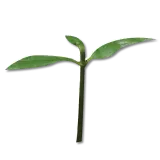Regenerative Framework
Regenerative economy is a fundamental reimagining of economic systems that places the health of ecosystems, communities, and cultures at the center. It moves beyond extraction of finite resources toward circularity, resilience, and shared value.
We are guided by eight regenerative principles for reimagining economic systems that restore ecosystems, strengthen communities, and unlock new possibilities.

Circularity
Regenerative economies cycle resources, relationships, and capital, returning value to where it originated, again and again.

Adaptivity
Living systems adjust and evolve. Regenerative economies stay responsive to shifting needs, risks, and realities.

Interconnectedness
Nothing lives in isolation. Regenerative economies are shaped by flows of value, trust, and mutual dependence.

Resilience
Strength lies in flexibility. Regenerative economies bend, absorb, and recover—built to endure uncertainty and change.

Holistic Value Creation
Value is more than profit. Regenerative economies account for a broader spectrum, including social, ecological, and cultural return.

Diversity
Variation is strength. Regenerative economies welcome a diversity of voices and strategies, and the power of many perspectives.

Self-Organization
Decentralized decision-making fuels vitality. Regenerative economies thrive when agency is distributed and intelligence flows from the ground up.

Emergence
Regeneration can’t be engineered. Regenerative economies cultivate the conditions for new patterns and possibilities to unfold.